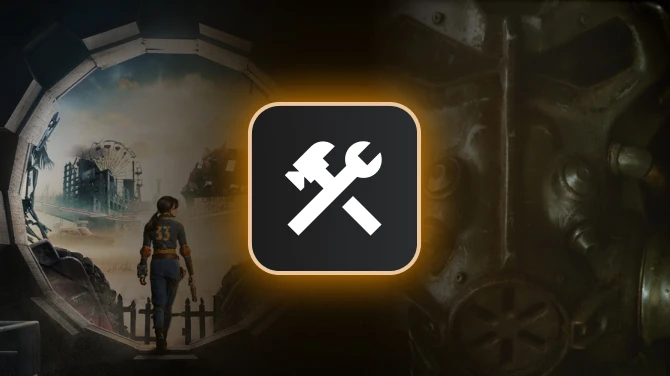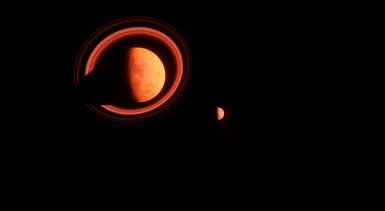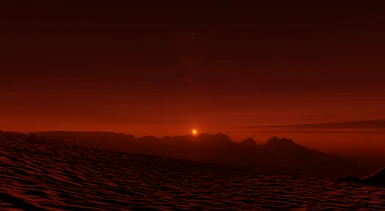
About this mod
The Kentara System is a larger-than-average star system situated around the brown dwarf of Kentara, One of the home system of Humans. As of today, the Kentara System remains largely uncolonized, with Kryso as an exception. Numerous large space stations are typically found in orbit around the colonized worlds.
- Permissions and credits
- Mirrors
- Changelogs
The Kentara System is a larger-than-average star system situated around the brown dwarf of Kentara, One of the home system of Humans. As of today, the Kentara System remains largely uncolonized, with Kryso as an exception. Numerous large space stations are typically found in orbit around the colonized worlds.
Kentara System, for many millennia, has been under the control of the Terran Federation, a vast Human-based civilization in the Milky Way. The system's close distance to the Sol System has resulted in it being the third star system visited by Humanity. Despite this, no large-scale colonization efforts have been made in the Kentara System.
The Kentara System's central star is a small Class T0.4 V Brown Dwarf named Kentara. This brown dwarf is misicule, measuring 86 thousand kilometers in diameter, and having a temperature of 1395 K. The Kentara System is composed of two different regions, called the Inner Kentara System, and the Outer Kentara System.
Architecture
The Inner Kentara System is composed of 6 planets. They are named; Kryso, Kentia, Karten, Pilon, Pyxon and Lysia. An highly dense and resoruce-rich asteroid belt called Ring of Kentara seperates the Inner and Outer Kentara System. The Outer Kentara System, compared to the Inner Kentara System, only contains two planets, are; Pailia and Xentura.
====================================================================================
Kryso:Kryso is the first planet in the Kentara System, situated at a distance of approximately two million kilometers from the primary star of Kentara. Due to its closeness to Kentara, it has a survivable temperature to most carbon-based life, and thus is filled to brim with life in it's deeper seas. This carbon-based life evolved only recently, and has not yet made it's way to the surface of Kryso yet. As a result of it's habitability, Kryso was one of the first exoplanets to be ever inhabited by Humans.
Many of the first settlements on Kryso have been turned into fully functioning metropolises, some of which go on for more than a hundred kilometers. Kryso's extremely mountainous terrain has made it an unlikely place for large-scale habitation, and as such, only a few massive urban centers are actually found on Kryso. The capital of Kryso, Selpar City, spans nearly a hundred kilometers in diameter, and is situated on an unusually flat region of the planet.
Lyria: Moon of Kryso. high montes magnitude. Possible subglacial oceans.
Kentia: A Planet mainly of sand consist of Nitrogen Atmosphere and Nitrogen frozen fluids
Karten: Not very strange or weird planet. Just subglacial oceans. Also consist of thin snow layers on polar capes
Pilon: Another planet with human colonies. Sadly the oceans consist of nitrogen. so Water regulary being delivered from Earth and Mirania
Pyxon: Frigid Carobia with very thin atmosphere.
Lysia: Typical Frigid Neptune. Nothing interesting was found
Pailia: Basic jupiter like planet
Kentara 6 C: Frigid another carbonia
Kentara 6 D: Haumea type moon of Barycenter
Kentara 7: High Metalic content world. Mostly used for mining to build colonies.
Planet X: Unknown object. Every technology we used to scan this planet were blown in out hands or malfunctioned right away when approaching the planet
Xenture:Hopper organisms are the most commonly seen in the upper atmosphere of Kentara 6 B and the second most common organisms classified by their lifecycle. Sinker organisms are unable to stay in a specific layer, typically tend to reproduce before falling into the planet, decomposing in a pyrolytic process, left for scavenger organisms to consume. Typically, sinker organisms can be found only in the upper clouds, being more fragile than other organisms. Sinker organisms have a same diet as floater organisms, composed of mainly floating planktons and other smaller organisms.
Saleros is a branch of organisms on Kentara 6 B that bear a significant resemblance to the aquatic creatures known as whales. They are usually large in size and the rarest branch, commonly limited to floaters and rarely hunters. Most walerian organisms are purely filter-feeders and herbivorous, primarily feeding off of various species of floating planktons or other small organisms.
Matarea is the most common branch of organisms present on Kentara 6 B. These creatures typically take the shape and appearance resembling a balloon of sorts. All creatures from Hoppers to scavengers can be classified as Matarea in terms of appearance.
Pasera is the second most common branch of lifeforms of Kentara 6 B classified by appearance. Paseras tend to resemble various creatures that use sails to fly. Paseras are typically limited to hopper organisms, while many floaters also can take the appearance of Hoppers.
«All organisms were found by Harrison Deutrion»
====================================================================================










